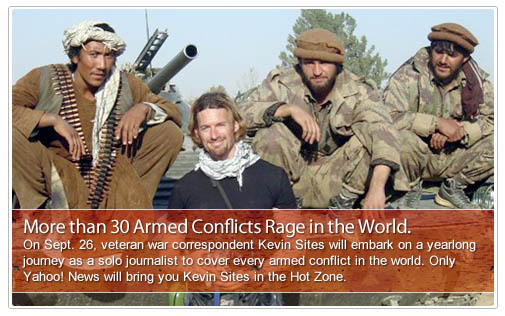Ray, Bob and I spent last week out in Los Angeles at our institutional digs (the Annenberg Center for Communication at USC), where we held a pair of meetings with professors from around the US and Canada to discuss various coups we are attempting to stage within the ossified realm of scholarly and textbook publishing. Following these, we were able to stick around for a fun conference/media festival organized by Annenberg’s Networked Publics project.
The conference was a mix of the usual academic panels and a series of curated mini-exhibits of “do-it-yourself” media, surveying new genres of digital folk art currently proliferating across the net such as political remix movies, anime music videos, “digital handmade” art projects (which featured the near and dear Alex Itin — happy birthday, Alex!), and of course, machinima: films made inside of video game engines.
 As we enjoyed this little feast of new media, I was vaguely aware that the Tribeca film festival was going on back in New York. As I casually web-surfed through one of the panels — in the state of continuous partial attention that is now the standard state of being all these networky conferences — I came across an article about one of the more talked about films appearing there this year: “The War Tapes.” Like Gunner Palace and Occupation Dreamland, “The War Tapes” is a documentary about American soldiers in Iraq, but with one crucial difference: all the footage was shot by actual soldiers.
As we enjoyed this little feast of new media, I was vaguely aware that the Tribeca film festival was going on back in New York. As I casually web-surfed through one of the panels — in the state of continuous partial attention that is now the standard state of being all these networky conferences — I came across an article about one of the more talked about films appearing there this year: “The War Tapes.” Like Gunner Palace and Occupation Dreamland, “The War Tapes” is a documentary about American soldiers in Iraq, but with one crucial difference: all the footage was shot by actual soldiers.
Back in 2004, director Deborah Scranton gave video cameras to ten members of the New Hampshire National Guard who were about to depart for a yearlong tour in Iraq. They went on to shoot a combined 800 hours of film, the pared-down result of which is “The War Tapes.” Reading about it, I couldn’t help but think that here was a case of real-life machinima. Give the warriors cameras and glimpse the war machine from the inside — carve out a new game within the game.
Granted, it’s a far from perfect analogy. Machinima involves a total repurposing of the characters and environment, foregoing the intended objectives of the game. In “The War Tapes,” the soldiers are still on their mission, still within the chain of command. And of course, war isn’t a video game. But isn’t it advertised as one?
Time Square, New York City (the military-entertainment complex)
There’s something undeniably subversive about giving cameras to GIs in what is such a thoroughly mediated war, a sort of playing against the game — if not of the game of occupation as a whole, then at least the game of spin. “I’m not supposed to talk to the media,” says one soldier to Steve Pink, one of the film’s main subjects, as he attempts to conduct an interview. To which Pink replies: “I’m not the media, dammit!”
In the clips I found on the film’s promotional site (the general release is later this summer), the overriding impression is of the soldiers’ isolation and fear: the constant terror of roadside bombs, frantic rounds fired into the green night-vision darkness, swaddled in helmets and humvees and hi-tech weaponry. It’s a frightening game they play. Deeply impersonal and anonymous, and in no way resembling the pumped-up, guitar-screeching game that the military portrays as war in its recruiting ads. This is the horrible truth at the bottom of the “Army of One” slogan: you are a lone digit in a massive calculation. Just pray you don’t become a zero.
Yet naturally, they find their own games to play within the game. One clip shows the tiny, gruesome spectacle of two soldiers, in a moment of leisure, pitting a scorpion against a spider inside a plastic tub, reenacting their own plight in the language of the desert.
At the Net Publics conference, we did see see one example of genuine machinima that made its own spooky commentary on the war: a hack of Battlefield 2 by Swedish game forum Snoken that brilliantly apes the now-famous Sony Bravia commercial, in which 250,000 colored plastic balls were filmed cascading through the streets of a San Francisco.
Here’s Battlefield:
And here’s the original Sony ad:
McKenzie Wark doesn’t address machinima in GAM3R 7H30RY (which launches in about a week), but he does discuss video games in the context of the “military entertainment complex”: the remaking of postmodern capitalist society in the image of the digital game, in which every individual is a 1 or a 0 locked in senseless competition for advancement through the levels, each vying to “win” the game:
The old class antagonisms have not gone away, but are hidden beneath levels of rank, where each agonizes over their worth against others in the price of their house, the size of their vehicle and where, perversely, working longer and longer hours is a sign of winning the game. Work becomes play. Work demands not just one’s mind and body but also one’s soul. You have to be a team player. Your work has to be creative, inventive, playful – ludic, but not ludicrous.
Video games (which can actually be won) are allegories of this imperfect world that we are taught to play like a game, as though it really were governed by a perfect (and perfectly fair) algorithm — even the wars that rage across its hemispheres:
Once games required an actual place to play them, whether on the chess board or the tennis court. Even wars had battle fields. Now global positioning satellites grid the whole earth and put all of space and time in play. Warfare, they say, now looks like video games. Well don’t kid yourself. War is a video game – for the military entertainment complex. To them it doesn’t matter what happens ‘on the ground’. The ground – the old-fashioned battlefield itself – is just a necessary externality to the game. Slavoj Zizek: “It is thus not the fantasy of a purely aseptic war run as a video game behind computer screens that protects us from the reality of the face to face killing of another person; on the contrary it is this fantasy of face to face encounter with an enemy killed bloodily that we construct in order to escape the Real of the depersonalized war turned into an anonymous technological operation.” The soldier whose inadequate armor failed him, shot dead in an alley by a sniper, has his death, like his life, managed by a computer in a blip of logistics.
How does one truly escape? Ultimately, Wark’s gamer theory is posed in the spirit that animates the best machinima:
The gamer as theorist has to choose between two strategies for playing against gamespace. One is to play for the real. (Take the red pill). But the real is nothing but a heap of broken images. The other is to play for the game (Take the blue pill). Play within the game, but against gamespace. Be ludic, but also lucid.


